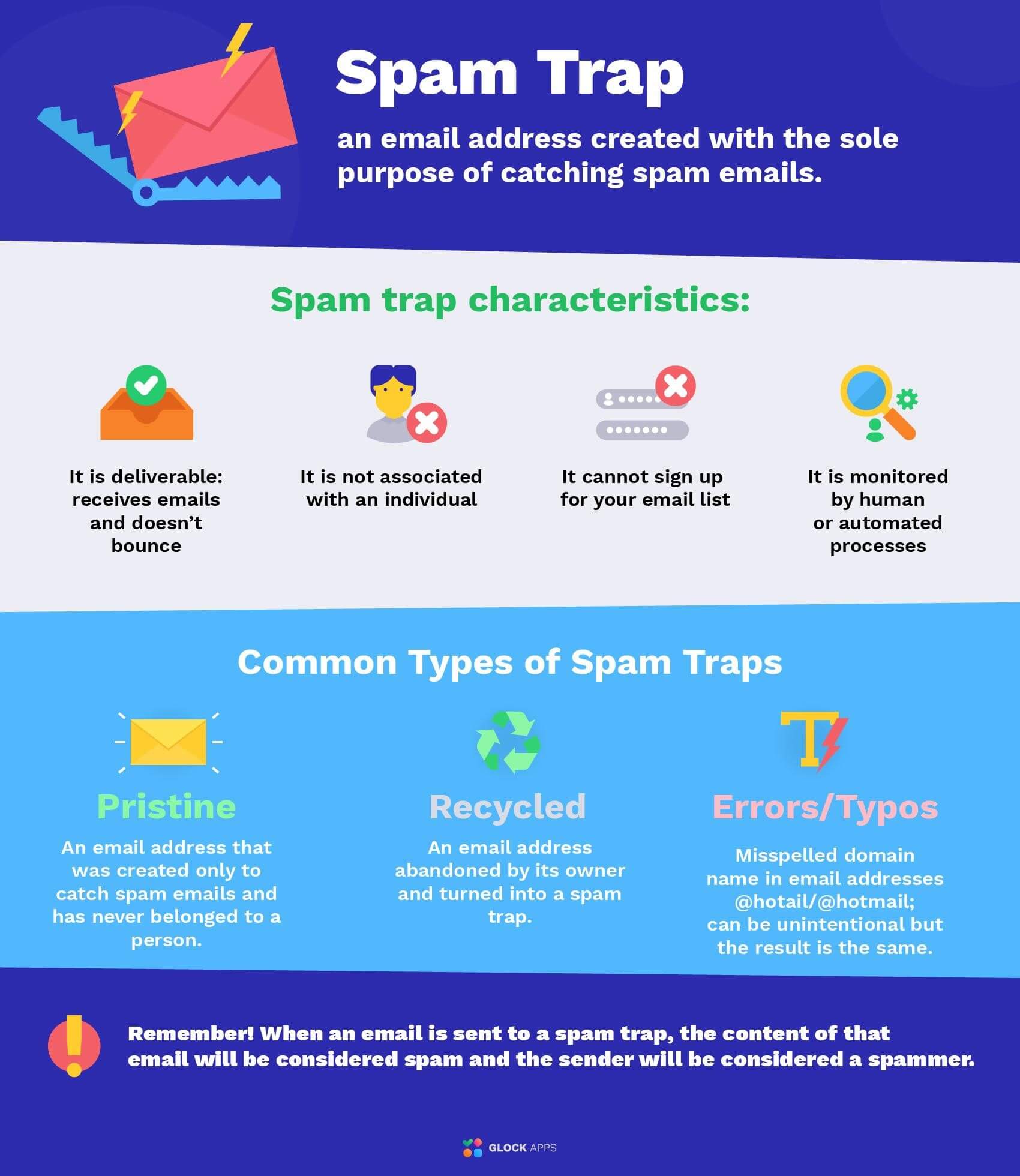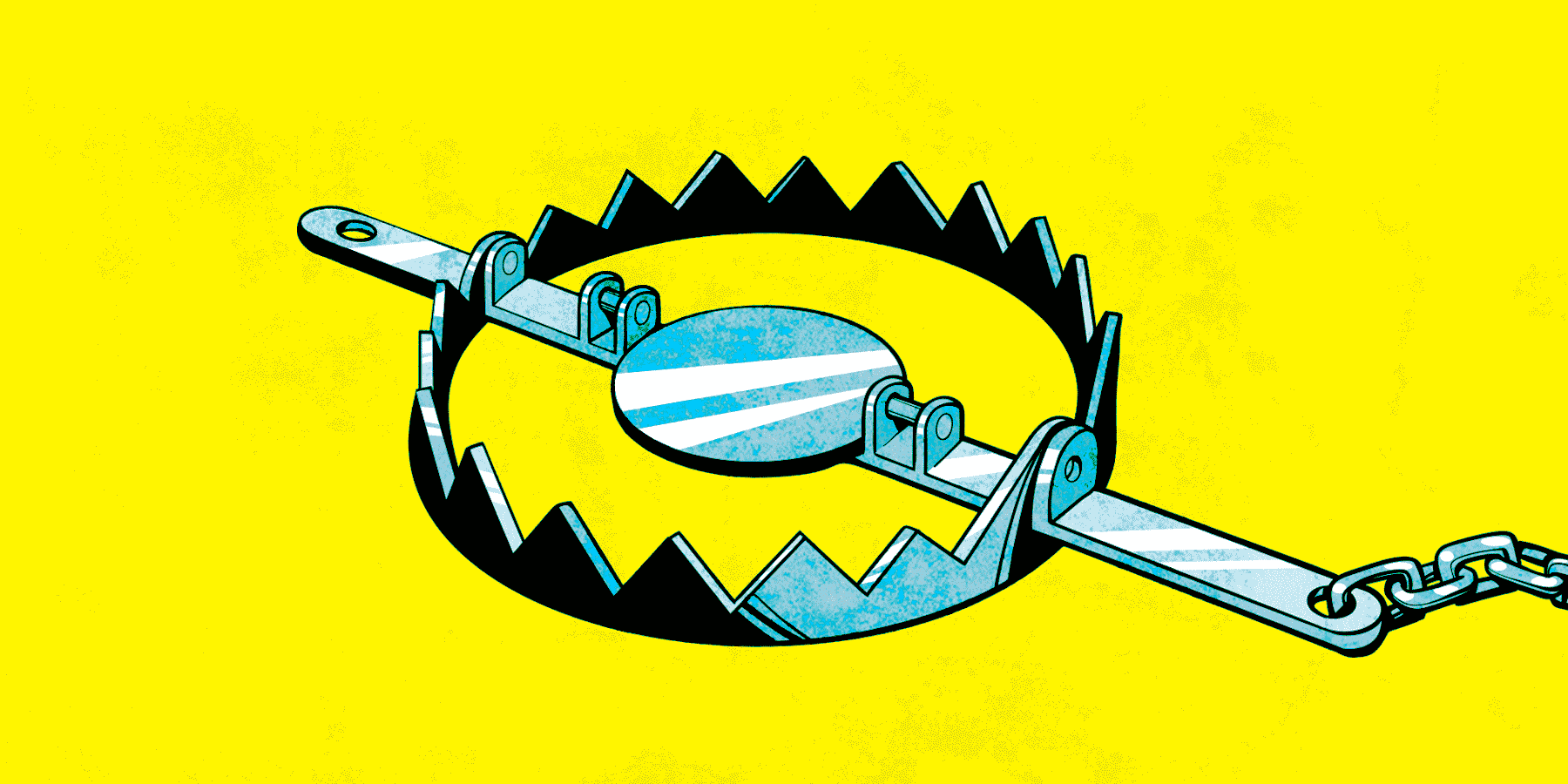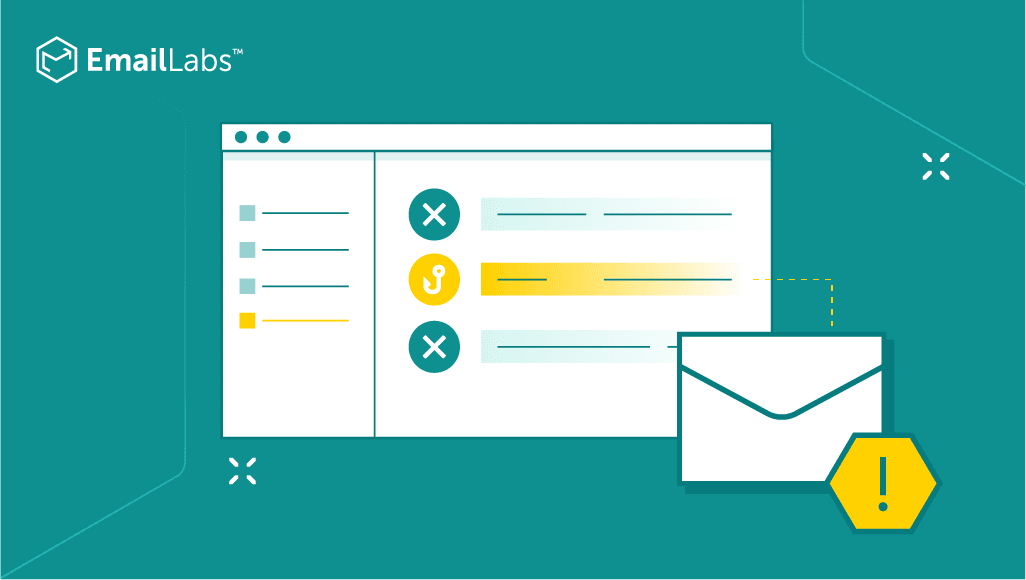Spam trap email addresses can harm your email marketing efforts. They are designed to catch spammers.
So, how can you find them and avoid trouble? Spam traps are email addresses used to identify and block spam. They can ruin your sender reputation if you unknowingly send emails to them. Finding these traps is crucial to maintaining a healthy email list and ensuring your messages reach real people.
In this blog post, we will explore effective methods to detect and remove spam trap email addresses from your lists. By doing so, you can protect your email marketing campaigns, improve deliverability, and safeguard your sender reputation. Stay tuned to learn practical tips and tools to keep your email list clean and spam-free.
Identifying Spam Traps
Identifying spam traps is crucial for maintaining a healthy email list. Spam traps are email addresses used to catch spammers. They can damage your sender reputation. Avoiding them ensures your emails reach real users. Let’s explore the types and signs of spam traps.
Types Of Spam Traps
There are different types of spam traps. Knowing them helps in identifying and avoiding them.
Pristine Spam Traps: These email addresses never subscribed to any list. They are created solely to catch spammers.
Recycled Spam Traps: These were once valid emails. They belong to users who abandoned them. The email provider then turns them into traps.
Typo or Invalid Spam Traps: These are common misspelled email addresses. For example, “gmial.com” instead of “gmail.com”.
Signs Of A Spam Trap
Spotting spam traps can be tricky. Look out for these signs.
High Bounce Rates: Frequent bounces can indicate spam traps. Keep an eye on email delivery reports.
Lack of Engagement: If certain emails show zero engagement, they might be traps. No opens or clicks are a red flag.
Complaints and Blacklisting: Increased complaints may lead to blacklisting. This often happens due to spam traps.
Regularly clean your email list. Use double opt-in methods. Monitor your email performance. These practices help identify and avoid spam traps.

Credit: glockapps.com
Impact On Deliverability
Finding spam trap email addresses impacts deliverability by lowering sender reputation, causing emails to end up in spam folders. Identifying and removing these addresses ensures better inbox placement and improves overall email performance.
Impact on DeliverabilityWhen you send emails, deliverability is crucial. Spam trap email addresses can drastically affect it. These traps are designed to catch spammers, but they can also snare legitimate senders.Risks Of Spam Traps
Spam traps pose significant risks. They can lead to your emails being blocked or sent to spam folders. This reduces your ability to reach your audience.Your email marketing efforts suffer. Imagine spending hours crafting a campaign only to have it ignored. It’s frustrating and counterproductive.Reputation Damage
Spam traps can harm your sender reputation. Email providers monitor your sending behavior. Falling into spam traps signals poor list hygiene.A damaged reputation means lower engagement rates. Recipients might start ignoring your emails. Your credibility takes a hit, making future campaigns less effective.Consider this: I once had a client whose emails consistently landed in spam. Their list contained several spam trap addresses. After cleaning the list, their deliverability improved drastically.Is your email list clean? How often do you validate addresses? Regularly checking can prevent these issues.Your email deliverability hinges on avoiding spam traps. Keep your list clean, monitor your reputation, and ensure your messages reach your audience.Preventive Measures
Prevent spam traps by verifying email lists regularly. Use email verification tools to identify and remove suspicious addresses.
Spam trap email addresses can wreak havoc on your email marketing efforts. Taking preventive measures can help you avoid these traps, ensuring your messages reach genuine recipients. Below, we’ll cover key strategies that can help you maintain a clean and effective email list.Email List Hygiene
Maintaining email list hygiene is crucial. Start by regularly cleaning your email list. Remove inactive subscribers who haven’t engaged with your emails in a long time.Use email validation tools to check for invalid email addresses. These tools can identify and eliminate obvious spam traps.Segment your list based on engagement levels. Focus your efforts on active subscribers. This reduces the risk of hitting spam traps.Double Opt-in
Implementing a double opt-in process can significantly reduce the chances of spam traps. When someone subscribes, send a confirmation email with a link they must click to verify their subscription.This ensures that only genuine users are added to your list. It also provides an opportunity for them to confirm their interest in your content.Double opt-in helps you build a more engaged and responsive audience. Have you ever considered how much more effective your campaigns could be with a highly interested audience?Taking these preventive measures not only safeguards your email marketing but also enhances the overall quality of your subscriber base. Are you ready to refine your approach and see better results?Remember, consistent attention to email list hygiene and using double opt-in can make a world of difference in your email marketing success. What steps will you take today to improve your email list?
Credit: www.validity.com
Detection Techniques
Detecting spam trap email addresses is crucial for maintaining a clean email list. Use tools that identify inactive or suspicious emails. Regularly updating and verifying your list helps avoid spam traps.
Finding spam trap email addresses is crucial for maintaining a healthy email list and ensuring your emails reach the intended recipients. Detection techniques play a significant role in identifying and eliminating these harmful traps. Below, we explore some of the most effective methods to detect spam trap email addresses.Email Verification Tools
Email verification tools are one of the most reliable ways to detect spam traps. These tools analyze your email list and identify invalid or suspicious addresses.Using services like ZeroBounce or NeverBounce, you can automatically check for spam traps before sending out your emails. They work by cross-referencing known spam trap databases, ensuring your list is clean.Investing in a good email verification tool saves you time and helps maintain your sender reputation. You don’t want to end up in spam folders because of neglected email hygiene.Activity Monitoring
Activity monitoring is another powerful technique. By tracking engagement metrics like opens, clicks, and bounces, you can spot unusual patterns that may indicate spam traps.For example, if an email address shows zero engagement over a long period, it might be a spam trap. Removing these inactive addresses from your list can improve deliverability.Regularly monitoring your email campaign performance helps you stay ahead of potential issues. Are you noticing a sudden drop in engagement? It might be time to clean your list.Addressing spam traps proactively can save you from a lot of headaches. What techniques have you found effective in maintaining a clean email list?Expert Tools
When it comes to maintaining a healthy email list and ensuring your emails land in the inbox, identifying and removing spam trap email addresses is crucial. Expert tools can simplify this process, saving you time and effort. But which tools should you consider? Let’s dive into some popular options and compare their features.
Popular Spam Trap Tools
Several tools stand out for their ability to detect spam traps effectively. Here are some of the most popular ones:
- ZeroBounce: Known for its accuracy, ZeroBounce not only identifies spam traps but also validates the overall health of your email list.
- EmailListVerify: This tool is user-friendly and provides real-time verification, ensuring your list is clean and ready for campaigns.
- NeverBounce: NeverBounce is praised for its speed and reliability, making it a favorite among marketers looking to maintain high deliverability rates.
Tool Comparison
Choosing the right tool can be overwhelming. Here’s a quick comparison to help you decide:
| Tool | Features | Price |
|---|---|---|
| ZeroBounce | Spam trap detection, email validation, data append | Starts at $15 for 2,000 emails |
| EmailListVerify | Real-time verification, spam trap detection | Starts at $4 for 1,000 emails |
| NeverBounce | Fast processing, high accuracy | Starts at $8 for 1,000 emails |
Each tool has its strengths. ZeroBounce excels in data accuracy, EmailListVerify is budget-friendly, and NeverBounce offers quick results.
Consider your specific needs. Do you prioritize speed, accuracy, or cost-effectiveness? I once chose ZeroBounce for a campaign needing precise data and wasn’t disappointed.
What are your thoughts? Have you tried any of these tools? Share your experiences in the comments below.

Credit: glockapps.com
Best Practices
When it comes to maintaining a clean email list, avoiding spam traps is crucial. Implementing best practices can help you identify and remove these harmful addresses. Let’s dive into some of the most effective methods you can use.
Regular Audits
Regular audits are essential for identifying spam trap email addresses. Schedule consistent checks to ensure your list remains clean.
For instance, you could set monthly or quarterly audits to review your email list. This helps you catch any suspicious entries early. It also prevents long-term damage to your sender reputation.
Audit tools can automate this process. They can scan your list for common spam trap indicators. These tools save you time and reduce human error.
Subscriber Engagement
Engaging your subscribers actively can also help identify spam traps. Encourage responses to your emails. This keeps your list dynamic and interactive.
Ask questions in your emails. This can prompt genuine subscribers to reply. Their engagement signals that their email addresses are active and legitimate.
Consider periodic re-engagement campaigns. Reach out to dormant subscribers to see if they still wish to receive your emails. If they don’t respond, it might be time to remove them from your list.
How do you keep your email list clean? Have you tried any of these methods? Share your experiences and insights. It could help others in the community.
Handling Spam Traps
Handling spam traps is crucial for maintaining a healthy email list. Spam traps are email addresses used to catch spammers. Sending emails to these addresses can harm your sender reputation. This can lead to your emails being marked as spam. Understanding how to handle spam traps can save your email marketing efforts.
Identifying Sources
First, identify where spam traps are coming from. They can come from outdated email lists. They may also be hidden in purchased lists. Always use double opt-in methods to confirm addresses. This reduces the chance of spam traps entering your list.
Regularly update your email list. Remove inactive subscribers. This helps keep your list clean. Engage with your subscribers often. This ensures that their email addresses are active and valid.
Removing Trap Addresses
Removing trap addresses is key to avoiding spam issues. Use email validation tools. These tools can detect invalid or suspicious addresses. They can help you clean up your list effectively.
Monitor your email engagement. Low engagement rates can indicate spam traps. Remove addresses that do not engage with your emails. This helps maintain a high sender reputation.
Consider using a reputable email service provider. They often have built-in tools to identify and remove spam traps. This can save you time and effort in managing your email list.
Case Studies
Case studies provide real-world insights into avoiding spam trap email addresses. Companies have faced challenges and found solutions. These stories can guide you in managing your email lists better.
Successful Avoidance
One company in the e-commerce sector managed to avoid spam traps effectively. They started by cleaning their email list thoroughly. They used a double opt-in process. This ensured only genuine users subscribed. They also regularly updated their email database. This prevented old, inactive addresses from being used.
Another company in the tech industry shared their approach. They used email verification tools. These tools identified and removed potential spam traps. Their email deliverability rates improved. Customer engagement increased. These steps helped them maintain a clean email list.
Lessons Learned
From the case studies, several lessons emerged. First, always use a double opt-in method. This confirms that the user wants to receive emails. It also prevents fake sign-ups. Second, keep the email list updated. Remove inactive users periodically. This reduces the risk of hitting spam traps.
Third, use email verification tools. These tools help identify suspicious addresses. Finally, monitor email campaign performance. If you see a drop in open rates, investigate. Spam traps could be the cause. These lessons can help maintain a healthy email list.
Frequently Asked Questions
How To Find Spam Trap Emails?
To find spam trap emails, use email verification tools. Regularly clean your email list. Monitor engagement rates and remove inactive subscribers. Avoid purchasing email lists.
How Do Spammers Find Email Addresses?
Spammers find email addresses through various methods, such as web scraping, purchasing lists, and guessing common names. They also use phishing attacks and social engineering to collect addresses.
How To Check If An Email Address Is Spam Or Not?
Check the sender’s email address, look for suspicious links, and verify grammar and spelling. Use email verification tools.
How To Get Rid Of Spam Traps?
Clean your email list regularly. Use double opt-in for subscriptions. Avoid purchased lists. Monitor email engagement. Use email validation tools.
Conclusion
Finding spam trap email addresses is crucial for email marketing success. Follow the steps outlined to keep your email lists clean. This helps improve your email deliverability and engagement rates. Always monitor and update your lists regularly. Use reliable tools and practices to identify and remove spam traps.
By maintaining a clean email list, you build better relationships with your audience. Keep your email marketing efforts effective and spam-free. Remember, a healthy email list is key to successful campaigns. Stay vigilant, and enjoy better results.
